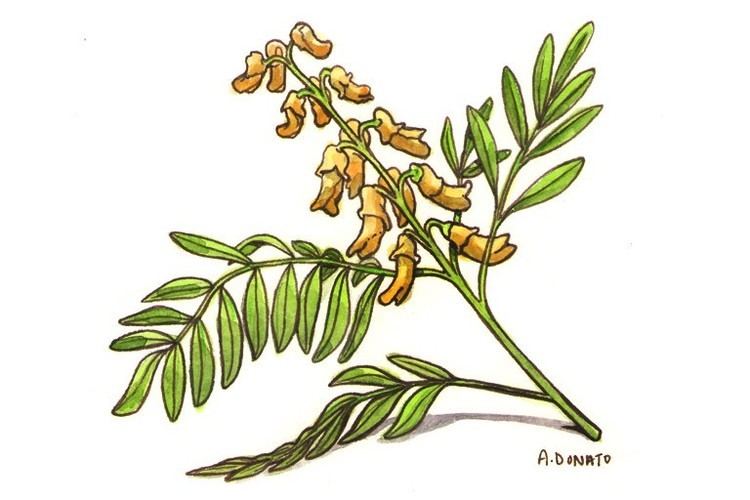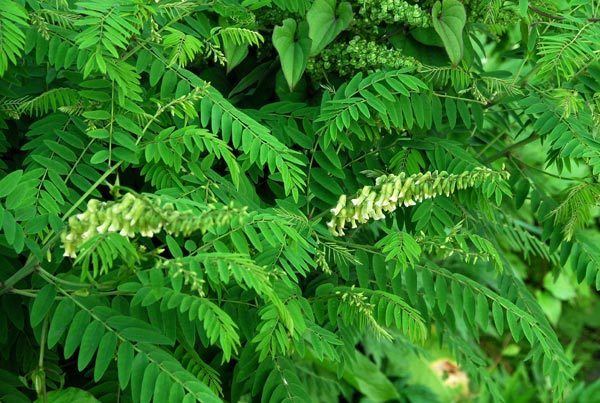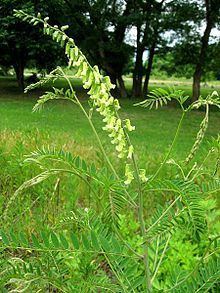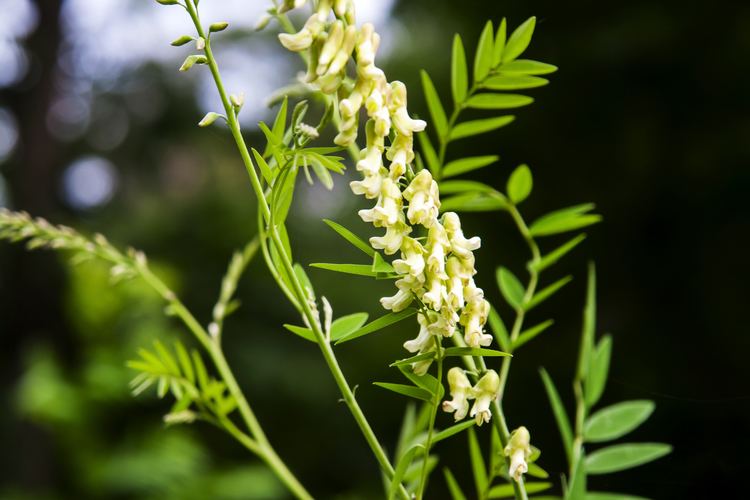Tribe Sophoreae Rank Species | Higher classification Sophora | |
 | ||
Similar Sophora, Coptis chinensis, Scutellaria baicalensis, Red sage, Female ginseng | ||
Sophora flavescens shrubby sophora
Sophora flavescens, the shrubby sophora, is a species of plant in the genus Sophora a genus of the Fabaceae family, that contains about 52 species, nineteen varieties, and seven forms that are widely distributed in Asia, Oceanica, and the Pacific islands.About fifteen species in this genus have a long history of use in traditional Chinese medicines. The root is known as Ku shen. is a typical traditional Chinese medicine.
Contents

Growth and cultivation

Sophora flavescens is an evergreen slow growing shrub growing to 1.5 m (4.9 ft) by 1 m (3.3 ft). It is hardy to 0–10 °F (−18 – −12 °C) and to US zone 6. The plant prefers light (sandy), medium (loamy) and heavy (clay) soils and requires well-drained soil. The plant prefers acid, neutral and basic (alkaline) soils. It cannot grow in the shade. It requires moist soil. Like many other species in the Fabaceae family, this species can fix nitrogen.
Research
Sophorae injection can reduce the toxicity and adverse effects caused by chemotherapy
It is anti-inflammatory and an antioxidant.
Anti-atherosclerosis May be an effective cholesterol-lowering agent and useful for preventing hypercholesterolemic atherosclerosis.
Sophora flavescens may have the potential for treatment of chronic inflammatory disorders such as rheumatoid arthritis.
Neuroprotective in focal cerebral ischemia.

A mix of Sophora flavescens and licorice (Glycyrrhiza glabra) gave better liver protective and anti-hepatocarcinogenic effects than licorice or Sophora alone. In addition, glycyrrhiza + sophora had a protective effect on immunosuppression, a strong non-specific anti-inflammatory effect, and reduced the incidence of sodium and water retention, protecting against pseudohypercorticosteroidism.
Sophora could possibly be used as a treatment for mast cell-derived allergic inflammatory diseases.
Inhibitory effects on cytochrome P450 3A4 (CYP450 3A4)
The methanol extract of Sophora flavescens showed a potent glycosidase inhibitory activity.
A promising source of a natural, novel, new antifoulant.

May make skin whiter color by inhibition on tyrosinase-dependent melanin biosynthesis. Therefore, a potential source of novel whitening agents for ultraviolet (UV)-sensitive skin
Chemistry
A variety of chemical compounds have been isolated from S. flavescens, including:

